Driving through Artists Palette in Death Valley, California, honestly feels like wandering into a natural art gallery. Bright, unexpected colors jump out—pink, green, yellow, purple—thanks to different metals in the soil reacting to the elements.
I always recommend visiting in the late afternoon. The colors pop against the rocky slopes when the sun hits just right.
Each time I round a bend on Artists Drive, the scenery surprises me. New shapes and colors keep appearing. The road is just over 8 miles, one way, so I find it easy to slow down, pull over, and actually soak it all in.
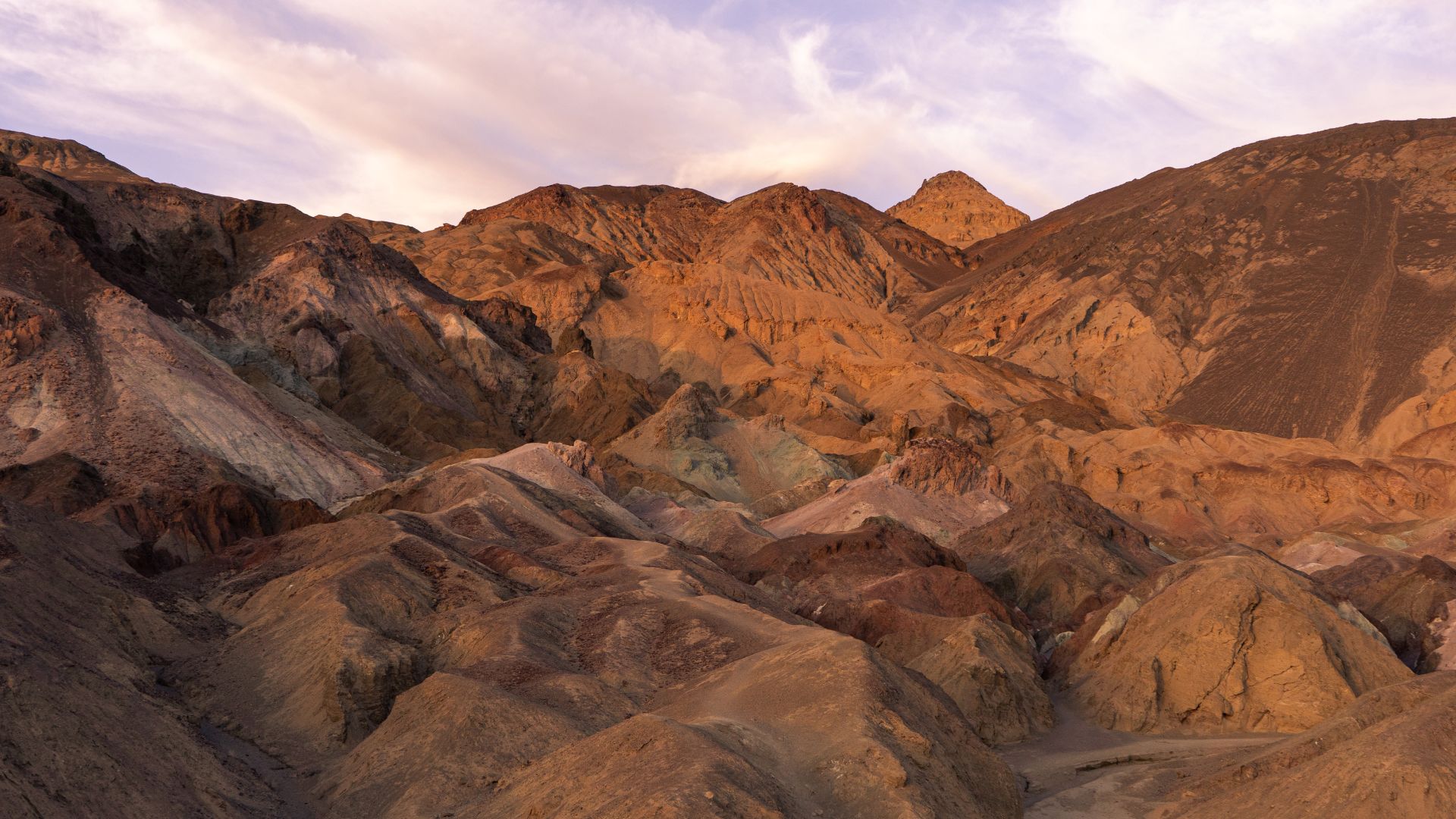
Discovering Artists Palette: Nature’s Painted Hills
Artists Palette stands out in Death Valley National Park for its wild colors, striking landforms, and convenient location. Science, history, and a dash of art all come together here—honestly, it’s a wild mix.
What and Where Is Artists Palette?
Artists Palette sits along the one-way Artist’s Drive, about 8.5 miles south of the HWY 190 and Badwater Road junction. The drive itself winds through canyons and those famous painted hills for about nine miles.
I found it easy to get there by car, though large vehicles (over 25 feet) aren’t allowed because of the sharp curves. When I arrived at the viewpoint, I saw wide open spaces and a few short trails. The light changes everything—especially late in the day—making the colors and shadows shift across the landscape.
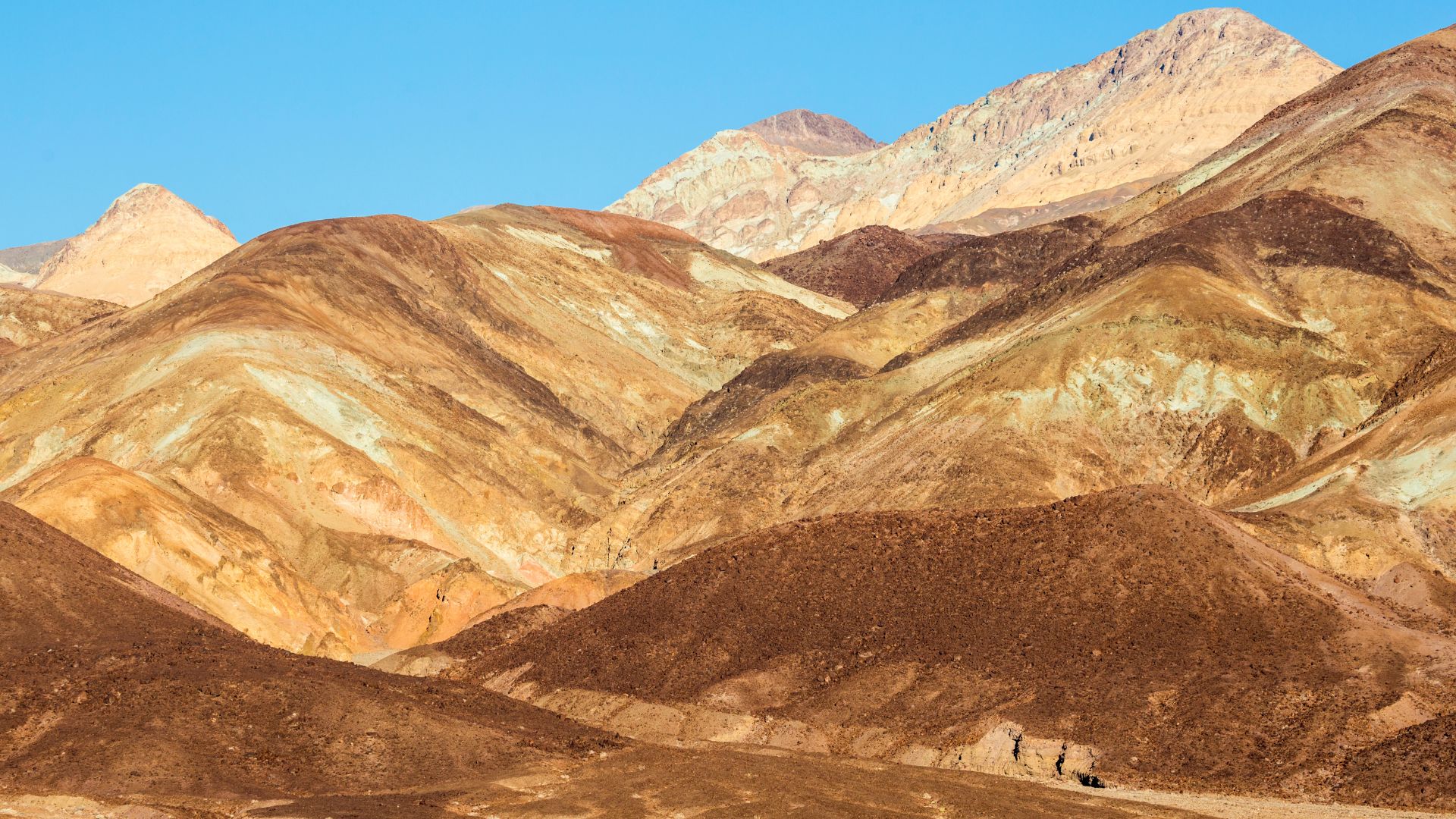
Geological Wonders of Death Valley
These hills are actually alluvial fans, created by water carrying material out of canyons and spreading it out. Over the years, volcanic activity and erosion exposed layers of ash, clay, and stone.
The Black Mountains shaped the area, with deep canyons cutting through ancient rock. Death Valley’s dry air really preserves those features. Up close, I noticed signs of old lava flows and mineral veins—reminders of the valley’s fiery past.
Unique Colors and Minerals
The colors at Artists Palette are honestly the main event. Greens, purples, pinks, yellows, reds—all layered together. Different minerals in the soil oxidize and create this show.
- Red and Pink: Iron oxides at work.
- Green: From chlorite.
- Purple: Manganese gives a lavender hue.
- Yellow: Weathered mica and other minerals.
Light changes everything. The afternoon sun throws shadows that make the colors even bolder. It really does look like a painter’s messy palette, scattered with wild swirls.
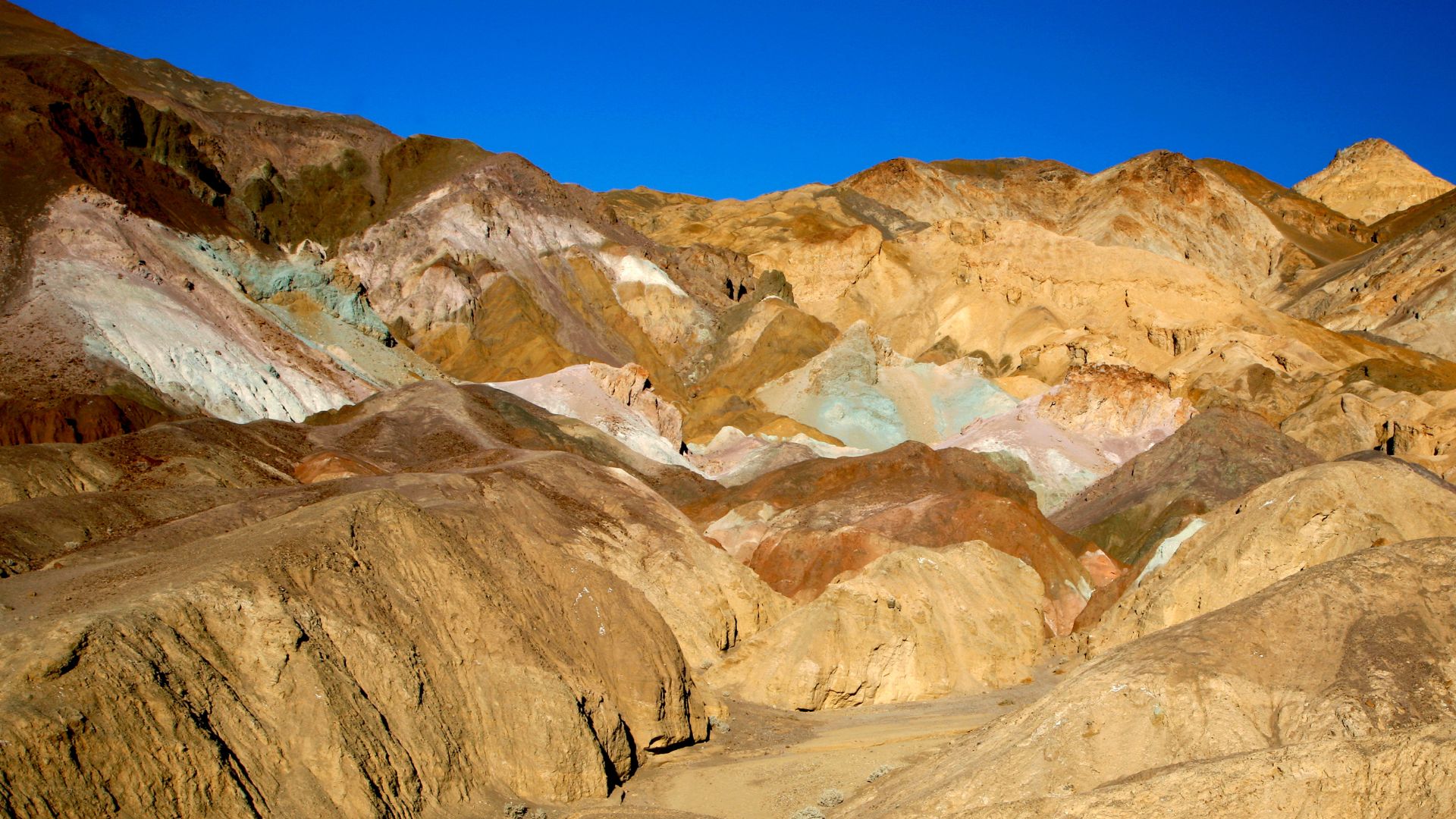
Cultural and Literary Connections
Artists Palette isn’t just rocks and minerals—it’s a place where imagination runs wild. Writers often compare its colors to famous paintings. Walking there, I couldn’t help but think about how the land inspires creativity, much like a great work of art.
People love to link the palette’s colors to art and poetry. Shakespeare and other writers drew these kinds of comparisons, and it fits. Fun fact: Star Wars filmed scenes here, adding a bit of pop culture to the mix and making the views even more legendary.
This blend of geology and imagination makes Artists Palette something special. For me, it felt like wandering inside a living painting, shaped by both nature and human curiosity.
Planning the Perfect Visit: Best Times and Route
The colors at Artists Palette shift with the light and the seasons. Planning your timing, checking weather, and knowing the drive and parking situation makes the trip smoother.
Why Afternoon Light Makes All the Difference
I’ve seen the landscape totally transform as the sun drops lower. Soft golden light hits the hills and suddenly pinks, greens, purples, and yellows start to glow.
Midday light feels harsh, but late afternoon brings gentle shadows and depth. Sunset is lovely too, but honestly, arriving an hour or two before sunset gives the best colors.
My favorite photos and views have come between 4:00 and 6:00 p.m. in spring. The warmth and color are unbeatable. Every time I bring friends or family, this is when we go.
Optimal Seasons and Weather Tips
Death Valley in summer? It’s brutal. I stick to cooler months—November to March is best. Daytime highs stay between 65°F and 80°F, which makes walking and exploring much more pleasant.
Crowds pick up during holidays and spring break. I go on weekdays for a quieter experience. Rain is rare, but it happens, so I always check the forecast. Sudden storms can close roads.
The Death Valley visitor center updates weather and road info. I always check before heading out to Artists Drive.
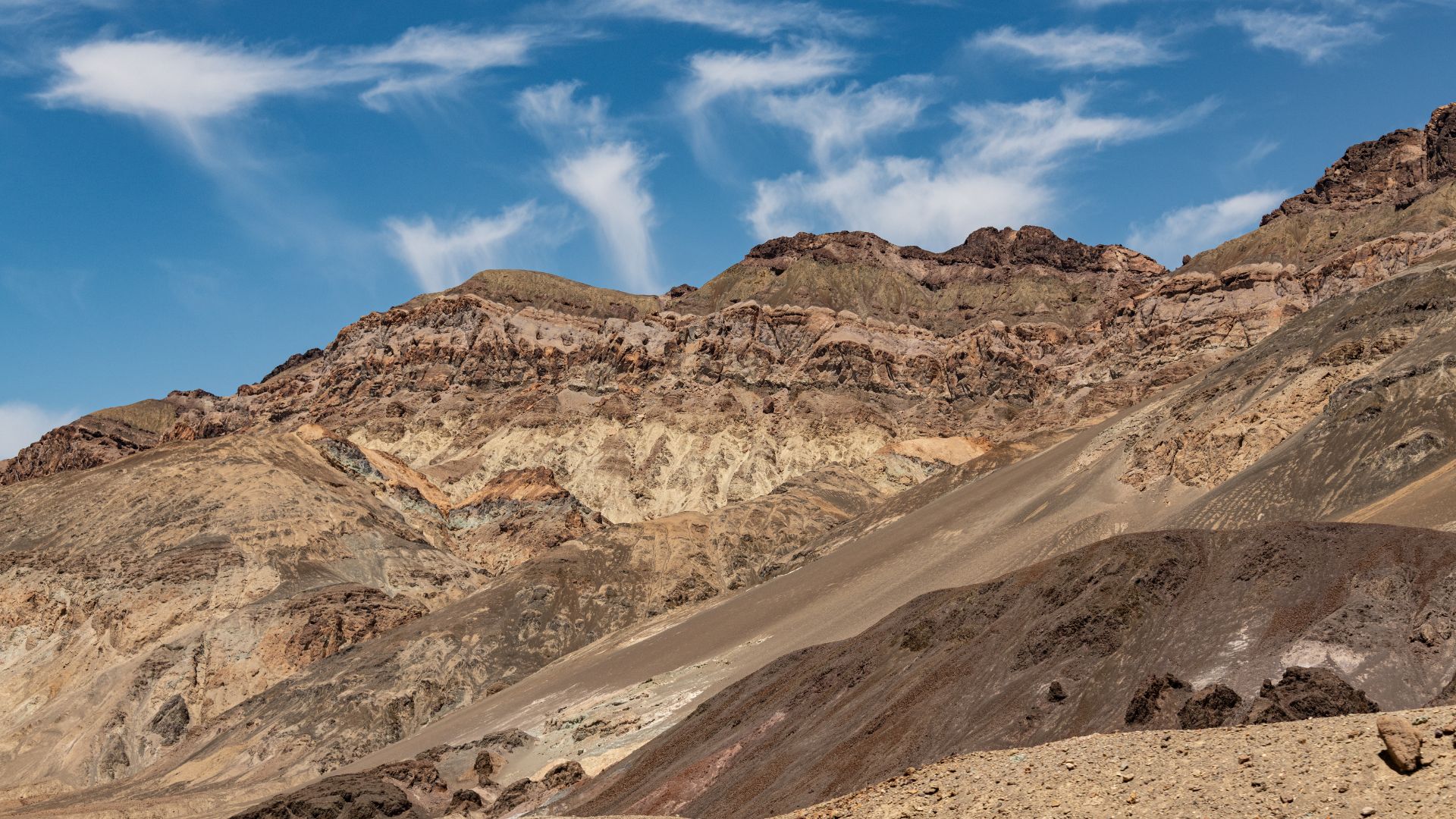
Navigating Artist’s Drive Safely
Artist’s Drive is a one-way, 9-mile paved loop. It twists and dips, with some narrow stretches. I drive slow, watching for other cars and the occasional cyclist. Speed limits are clearly posted; it’s safest to stick with them, especially when afternoon light can play tricks on your eyes.
Large RVs and trailers over 25 feet aren’t allowed. I recommend a regular car or SUV. There are pullouts for stopping, so I never block the road.
If you’re starting at Furnace Creek Visitor Center, it’s about 15 minutes by car to the start of Artist’s Drive. I like to start in the early afternoon to catch the best light at Artists Palette.
Finding the Artists Palette Parking Area
You can’t miss the Artists Palette Parking Area along the drive—it’s well-marked. Most days, there’s enough space, but weekends and holidays fill up fast. I’ve learned to get there earlier in the afternoon for a better spot during busy times.
From the parking lot, a short path leads to viewing platforms and great photo spots. I always lock the car and stash valuables out of sight. There are no restrooms here, so I take care of that at the visitor center beforehand.
A park map helps a lot—grab one at the visitor center or download it to your phone. The wide view from this parking area sticks with me every time.
Capturing the Colors: Photography and Experience
Artist’s Palette is famous for its layers and colors. The way sunlight, geology, and even your mood come together shapes the experience and, honestly, the photos you’ll get.

Afternoon Light Techniques for Stunning Photos
Afternoon is the sweet spot for photography here. The light softens, making the hills pop with color and texture. Shadows stretch out, revealing every ridge and layer.
I always bring a tripod—steady shots matter as the light changes. A polarizing filter helps cut glare and makes the sky deeper blue, which makes those colors stand out. Keeping the sun behind me keeps the colors from looking washed out.
Here’s what’s worked for me:
| Tip | Effect |
|---|---|
| Arrive afternoon | Colors are richer, lighting is softer |
| Use a tripod | Sharp images in any light |
| Polarizer filter | Reduces glare, brightens sky |
| Position sun | Keep the sun at your back |
Bringing Out the Palette’s Natural Hues
The colors come from volcanic minerals—iron oxides, chlorite, and more. I spot bands of red, pink, yellow, green, and even a hint of blue. To get those colors right, I adjust my camera’s white balance to “Cloudy” or “Shade.” It adds warmth and keeps things true to life.
I don’t over-edit my photos. I try to capture what I see. Sometimes stepping back or climbing a bit higher helps fit more colors into one shot. It’s all about showing how nature mixes these shades together.
Connecting Art, Life, and Nature
Standing at Artist’s Palette, I can’t help but think about the connections between art, life, and nature. The rolling hills look like a painter’s palette, or maybe brushstrokes from a giant hand. Every layer of volcanic rock feels intentional, as if nature planned it.
There’s something minimalist about it—empty spaces between the colors say as much as the colors themselves. It reminds me of poetry, where a few words can carry deep meaning.
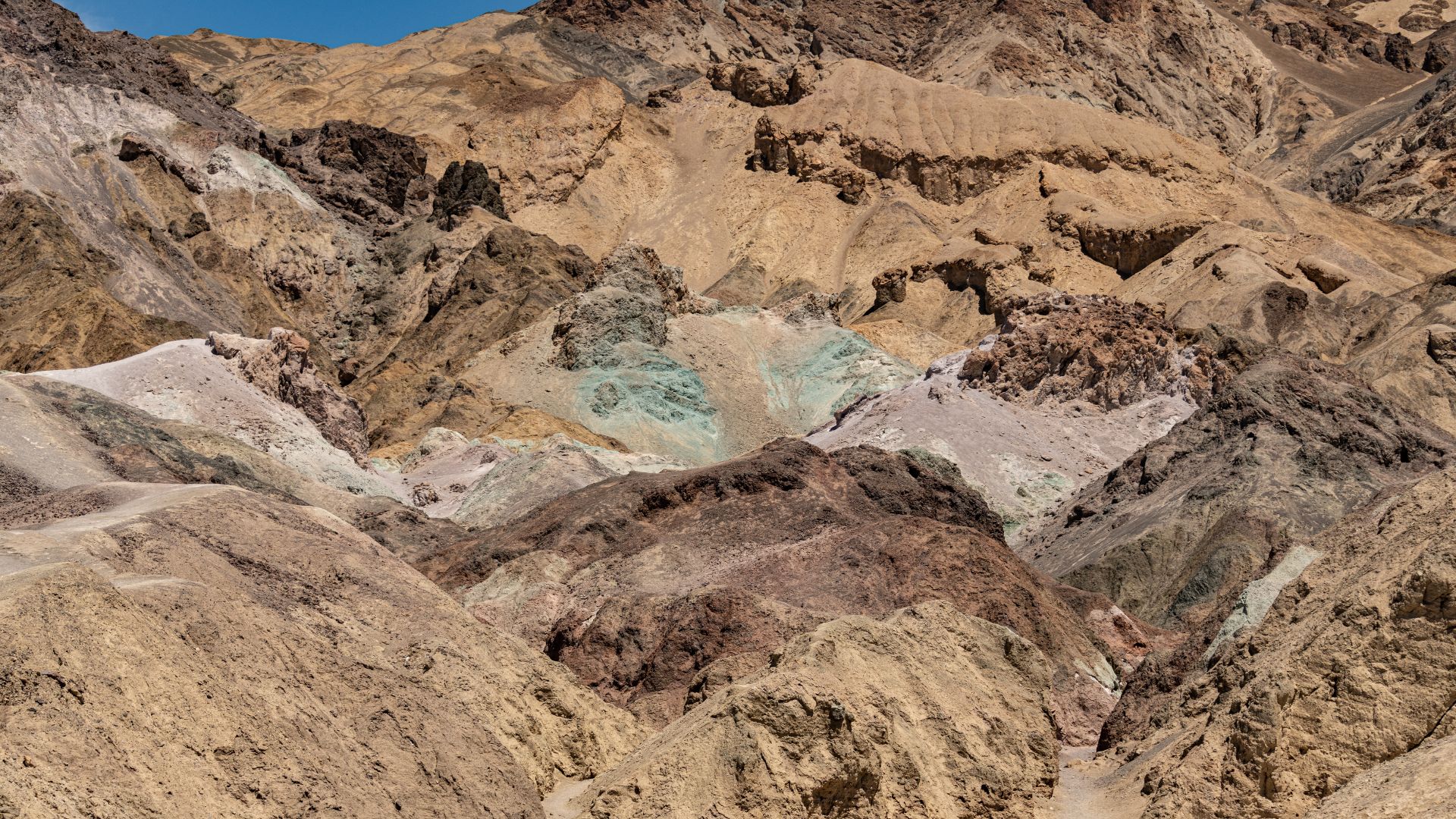
Poetic Reflections and Inspiration
The quiet out here sparks ideas. The wind, the colors, the silence—it’s easy to drift into reflection.
Sometimes I jot down lines or sketch what I see. Each patch of color feels like a verse, a line in a poem written by the desert. That sense of calm and possibility, found in wide open places, is something I try to bring back with me—both in photos and in life.
Beyond Artists Palette: Nearby Adventures
Death Valley has so much more to offer than just the colors of Artists Palette. I’ve found hiking trails, glimpses of rare wildlife, and rugged wilderness that’s both inviting and a little intimidating.
Exploring Golden Canyon and Badwater Basin
Golden Canyon is just a short drive from Artists Palette and easily one of the park’s most popular hikes. The trail winds through golden narrows, offering shade and layered rock walls. The way the sun hits the canyon’s walls—especially early or late—makes the colors glow.
Badwater Basin, the lowest spot in North America at 282 feet below sea level, is just a bit farther south. Standing on those endless salt flats, surrounded by mountains, feels surreal. The cracked salt underfoot makes for some wild patterns.
Key Details:
| Site | Distance from Artists Palette | Main Feature |
|---|---|---|
| Golden Canyon | ~5 miles | Narrow, golden walls |
| Badwater Basin | ~8 miles | Salt flats |
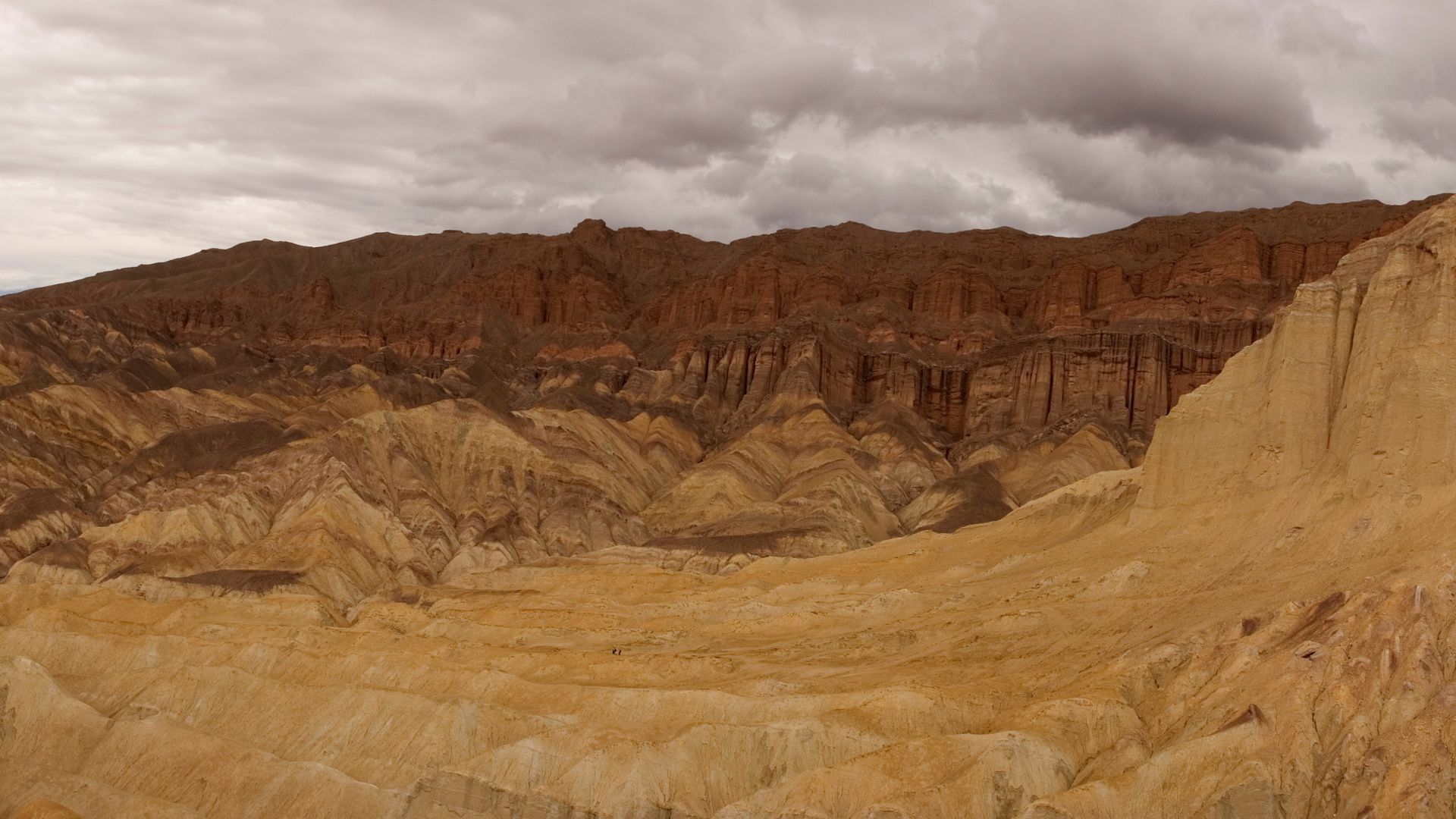
Wildlife and Flora Along the Route
As I looped through the area, I kept my eyes peeled for wildlife. Death Valley is dry, so animals are shy, but I’ve spotted jackrabbits and lizards darting across the rocks. Cooler months are better for sightings—sometimes you even get a glimpse of an ermine, though that’s rare.
No Joshua trees down here, but creosote bushes, desert holly, and mesquite are everywhere. After winter rains, wildflowers pop up and add their own color to the scene. Early mornings and dusk are best for seeing wildlife.
Camping and Hiking Opportunities
Several campgrounds sit close to Artists Palette, both developed and primitive. Furnace Creek Campground is my favorite base—it has water and restrooms, which are huge pluses. For more peace and quiet, Texas Springs Campground sits higher and feels more secluded.
Hiking is a highlight. Golden Canyon Trail has options for everyone. I like the 2-mile out-and-back to Red Cathedral—good shade and views. Shorter walks, like the Natural Bridge hike, show off the geology up close. Always carry extra water and skip midday hikes in summer.
Popular Campsites Nearby:
- Furnace Creek Campground
- Texas Springs Campground
- Sunset Campground (more exposed, but amazing for stargazing)

Connecting with Surrounding Wilderness
Outside the marked trails and popular sites, I wandered through untouched stretches of desert. Death Valley National Park protects a massive area of wilderness, so escaping the crowds is surprisingly easy.
I always checked park rules before venturing off-road. Some spots are off-limits to protect delicate plants and wildlife, and I didn’t want to be that person who breaks the rules.
Mountains shoot straight up from the dry valley floor, creating wild contrasts you can’t really capture in a photo. The wilderness here feels rugged and remote, almost intimidating.
Short cross-country hikes let me soak in the quiet, empty beauty up close. Even on these quick hikes, I stayed careful—cell service disappears, trails vanish, and a map becomes your best friend. I always told someone my plans, just in case.
Personal Reflections: Childhood, Inspiration, and Art
Driving through Artists Palette took me back to my early years. That drive shaped how I look at both nature and art, honestly.
The colors, the open space, and the people with me all got tangled up in my thoughts and feelings as we drove along.
Memorable Moments and Stories
As a kid, I loved colors. I can still picture myself finger painting at the kitchen table, mixing paints into muddy browns or fresh greens.
Visiting Artists Palette, that old sense of wonder came rushing back. Each hill looked like it had been brushed with giant strokes of blue, red, pink, and green.
It’s wild how the desert hides so many surprises. Sometimes I’d stop just to look closer at a rock or feel the sun on my face, and it reminded me of exploring parks with my parents.
I felt proud watching nature shape itself over time. Weathering and minerals—not paint—created this real-life masterpiece.
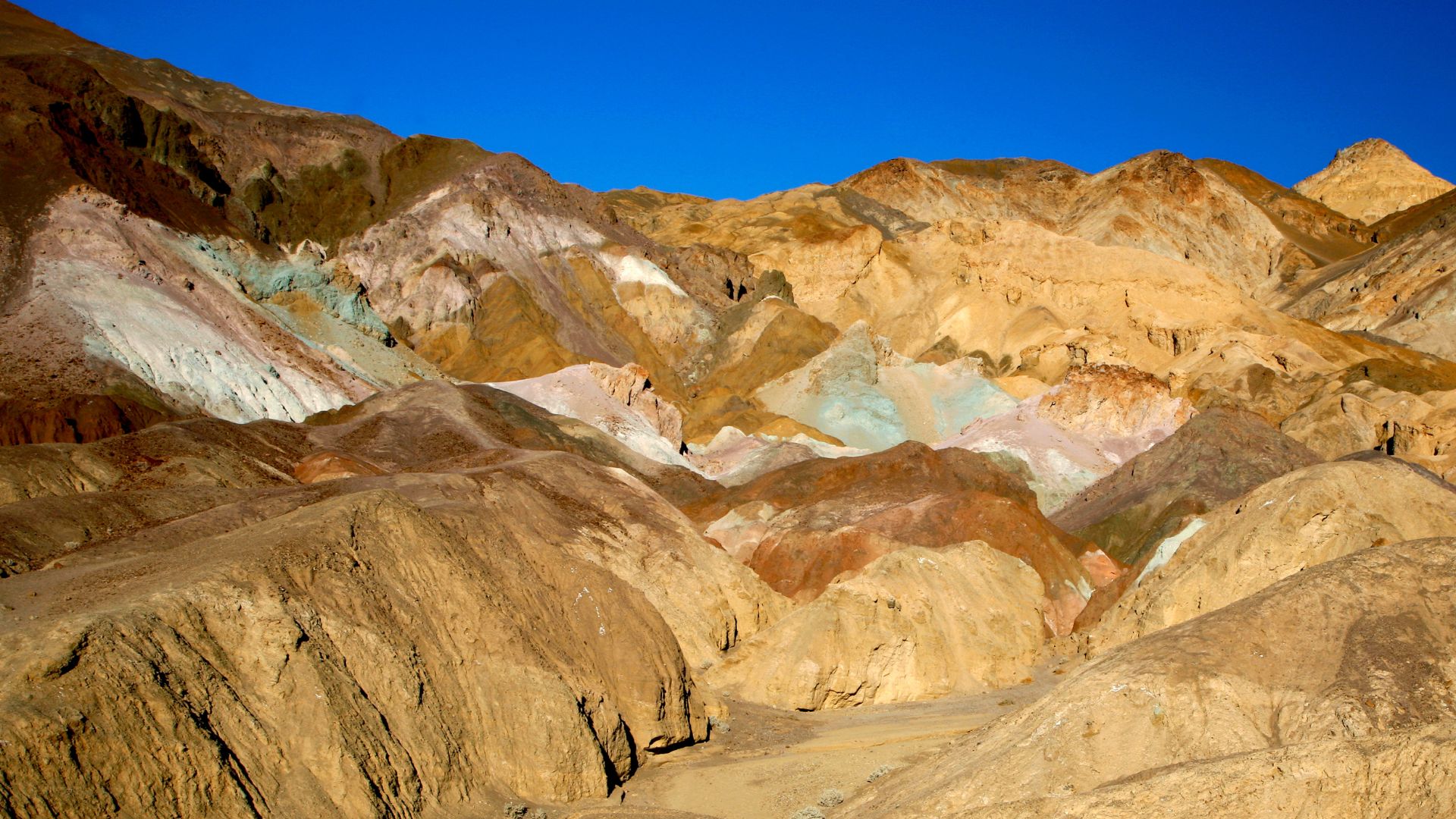
Discovering Minimalism in the Desert
The desert’s vastness taught me a lot about minimalism. There’s not much in sight except colored hills and endless sky.
That wide-open space gave me room to think and notice things I usually overlook. A single plant or rock in the middle of nowhere suddenly felt important.
The openness made the colors at Artists Palette even more intense. With nothing else around, each color popped.
Sometimes, less really is more. The quiet pulled me in and let me connect with the place in a way crowded spots never do.
Travel Companions and Lifelong Love
Jack joined me on this trip, and our friend Florence tagged along too. Road trips like this always bring us closer together.
The long, quiet drive gave us time to talk, laugh, and share stories from when we were kids. Jack took most of the photos I love from this trip.
Florence, who paints, felt inspired by the colors and started sketching them in her notebook. Being with them made everything better.
Traveling with people you love turns a regular drive into a memory that sticks. Artists Palette became a backdrop for friendship and inspiration, deepening my love for travel and art.
The Intersection of Gender, Life, and Exploration
Exploring the desert got me thinking about my identity, including my gender. Out here, far from the noise of daily life, I felt a freedom to just be myself.
Jack and Florence listened to my story and really got it. We talked about how adventure isn’t just about the places you see, but also how you see yourself while you’re there.
Being true to myself made me appreciate the beauty around me even more. Every hill and color felt like a reminder that everyone’s different—and that’s what makes exploring so meaningful.
This journey through Artists Palette gave me space to reflect on the land and my own life in a way that felt honest.
Extending Your Desert Adventure
Exploring Artists Palette was just one part of my desert adventure. After seeing the painted hills, I found even more ways to enjoy California’s wild landscapes.
Road Trips Beyond Death Valley
I mapped out some easy road trips just outside Death Valley National Park. Lone Pine and the scenic drive along Highway 190 quickly made my list.
Lone Pine’s famous Alabama Hills, with smooth, round boulders, are perfect for hiking or snapping photos. I couldn’t resist stopping by the Lone Pine Film History Museum for a peek at Old Hollywood props.
Seeing Mount Whitney, the tallest mountain in the lower 48, was a highlight. The Visitor Center in Lone Pine had helpful maps and trail info.
I always double-checked road conditions and planned for gas stops. Out here, towns can be far apart, and I didn’t want to get caught off guard.
Red Rock Canyon State Park Day Trip
Red Rock Canyon State Park sits about two hours from Death Valley by car. Those colorful cliffs and wild rock formations along Highway 14 really grabbed my attention.
Short trails like Hagen Canyon Nature Trail (under a mile!) are easy for most folks. The scenery reminded me of old Western movies, with layers of red, orange, and white rock everywhere.
The park has a small visitor center and good picnic spots, so it’s a nice place to stop for lunch. Dogs can come too, as long as they’re leashed.
Camping’s available, but I just stayed for the day. With almost no shade, a hat and sunscreen are non-negotiable.
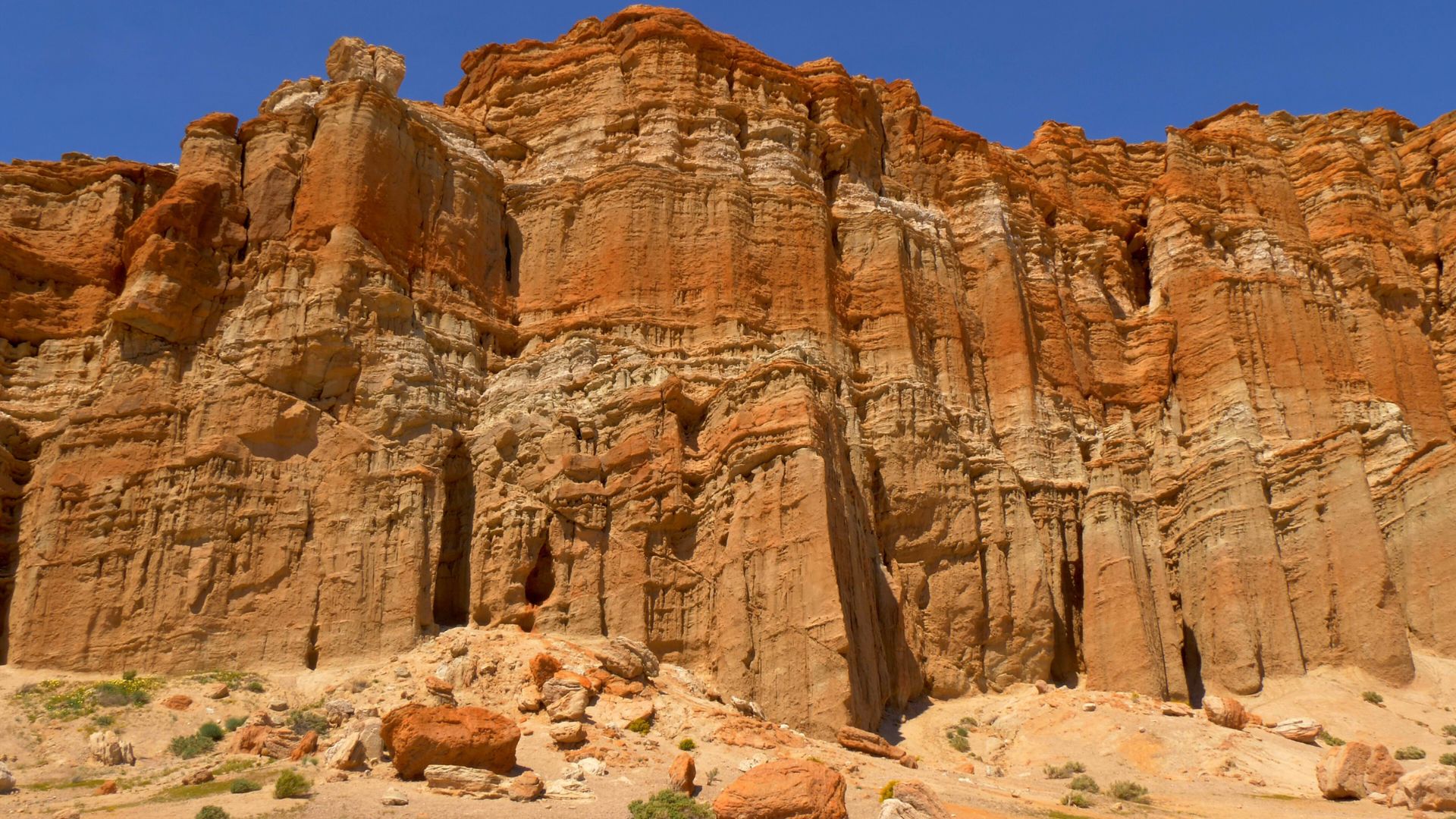
Sierra Nevada Escapes and Joshua Trees
Mountains call to me, and the Sierra Nevada range lies less than an hour west of Death Valley. I spent time wandering high-altitude forests, quiet meadows, and chilly streams.
Mammoth Lakes and Bishop both offer lakeside walks and mountain trails when the weather’s warm.
I wanted a closer look at Joshua trees, too. The southern end of Death Valley has a few, but for the full experience, I’d suggest a trip south to Joshua Tree National Park.
These oddball trees, with thick arms reaching for the sky, look especially striking at sunrise or sunset. You won’t forget them.
Packing for the Sierra Nevada is a different game compared to the valley floor. It can be 30 degrees cooler up there, so I brought extra layers and sturdy shoes.
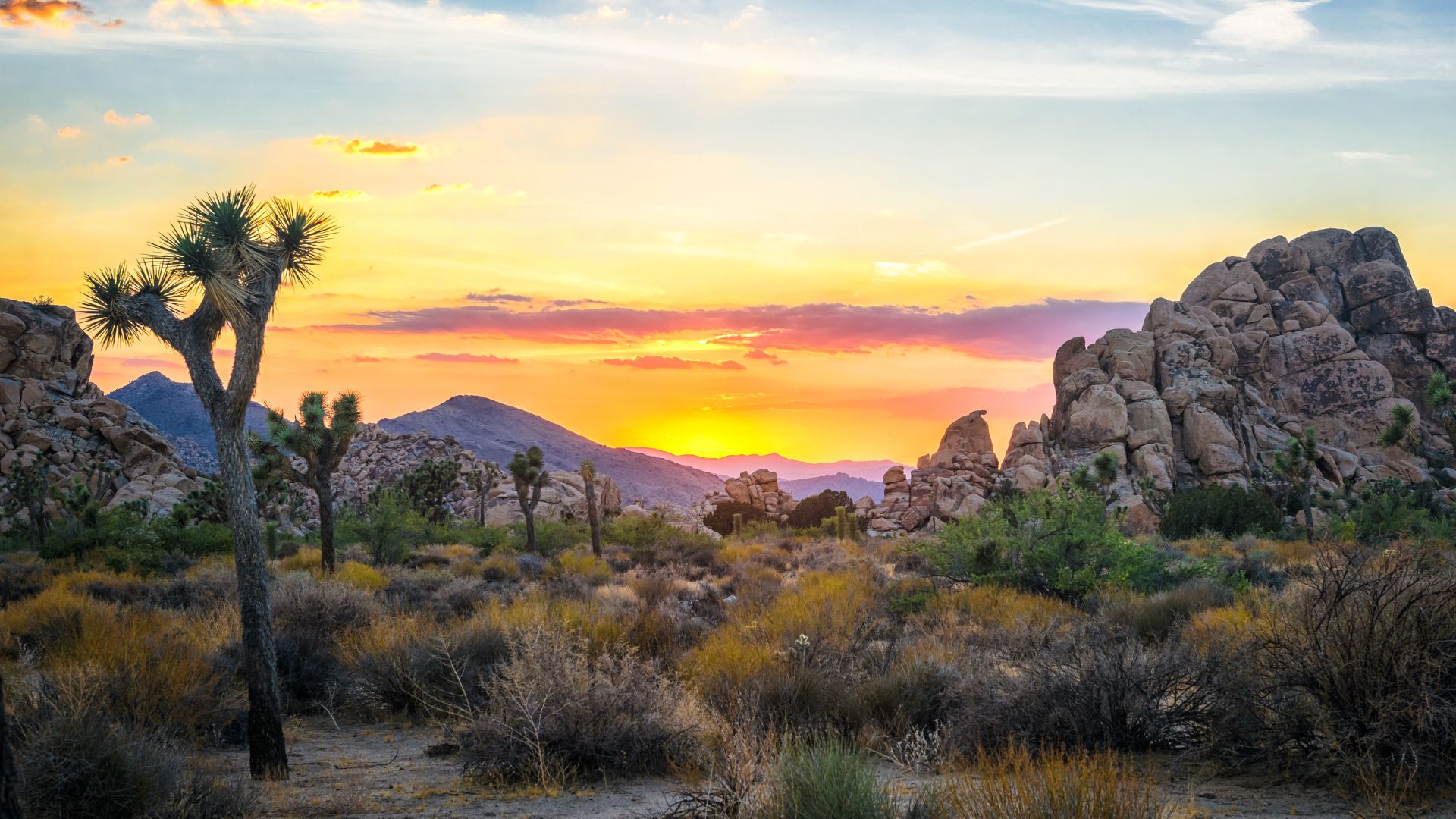
Useful Resources for Travelers
I stumbled into the Death Valley Visitor Center in Furnace Creek and, honestly, it made a huge difference for my trip. The staff handed me maps, gave a quick weather report, and tossed in some tips about when to hit the best spots.
They even pointed out a few ranger-led programs about wildlife and geology, which I hadn’t even considered before.
Whenever I got lost or worried about road closures, I’d hop onto the California Department of Transportation website. It’s not the prettiest site, but it gets the job done.
Camping plans? The National Park Service website had up-to-the-minute info on available sites and how to reserve them. It saved me from a couple of headaches.
If you’re heading to places like Red Rock Canyon State Park or wandering through the Sierra Nevada, I’d recommend sticking with the official California State Parks websites. They list out the amenities, fees, and throw in trail maps—super handy when you’re piecing a trip together.
And for anyone who likes having everything on their phone, both recreation.gov and AllTrails have been lifesavers. I used them to scout out routes, skim through reviews, and double-check trail conditions before heading out.
Honestly, having these resources at your fingertips makes travel feel a lot less overwhelming.

